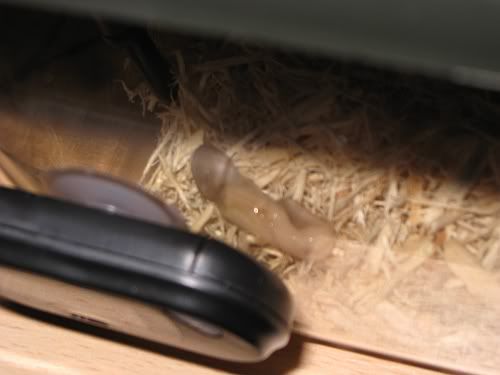I never had to deal with a regurge thanks goodness but this is what is post on the sticky by kathy Love about it!!
Kathy Love FAQ's
FAQ from Kathy Love on Regurgitation Treatment
THIS IS VERY IMPORTANT - once a snake has regurged, especially twice or more, it is more likely to keep on regurging until it dies, unless something is changed about its care and feeding. It is very important NOT to let this continue. PLEASE FOLLOW THE INSTRUCTIONS BELOW VERY CAREFULLY. This is from my FAQ on regurges:
I suspect your problem is probably not bad mice, but about handling too soon, feeding too soon or too large of a meal, a stomach "bug", or improper temps. If you make these mistakes once, or even twice, it is not usually a problem if you FOLLOW MY INSTRUCTIONS EXACTLY. But remember, each time it regurges, the stomach acids are depleted, and the whole electrolyte balance is thrown off more and more each time, and it makes it MORE likely that it will continue to throw up until it dies. (those consequences are just my opinions - I do not know if science backs up my conclusions, but my experience certainly does!) That is why it is so important to NOT ALLOW another regurge.
The next month or two is crucial. DO NOT feed it for AT LEAST 8 days since the last regurge. NOT ANYTHING AT ALL! Then get a newborn frozen pinky and cut it in half (or cut off just the head) If she eats it, leave her alone for a whole week. (no handling). Repeat the partial pinkie feeding the following week. Then feed a whole newborn pinkie a week after that, if there has been no regurge. Leave alone for a whole week. If she regurges, wait a week and repeat 1/2 pinkie. If she keeps it down, wait a week and repeat whole pinkie. If she holds down a couple of meals, DO NOT rush back into larger meals and more handling. Treat this seriously. Go very slowly. After 3 successful meals, go to a newborn pink every 5 days. Go back to normal feedings only after 6 successful meals. Always wait to handle until after 3 or 4 days, but only AFTER 6 successful meals. No handling until then (causes stress, need to keep stress down). And NEVER feed again right after a regurge - ALWAYS wait AT LEAST 7 or 8 days, maybe even up to 10 days, and then only feed something that was about 1/2 the size (or less) of what she regurged..
Also, be sure that temps are not too warm or cool. Try to give an area of low to mid 80s on one side and 70s on the other. Too hot or cold will cause regurges.
Grapefruit seed extract can sometimes help if the snake has some sort of "stomach bug" (any microbial problem) as it is a natural remedy that is good against many kinds of pathogens, but not as strong as an antibiotic prescribed by a doctor. This product has been used in agriculture for many years and seems to be very safe, as long as you dilute it with enough water that the acidity does not burn the tissues. A vet has told me he feels that it may somewhat alter the pH of the animal and thus change the way medicines are absorbed. So if you use this product and then take the snake to a vet, mention the treatment so it can be taken into account if the vet decides to change the prescription because of it. It is best to mix it in a glass and taste it to make sure it is not so bitter that the snake refuses to drink it. I have used it on myself and so has my husband. I find it works better on stomach problems than for other symptoms (such as respiratory - I didn't have any luck treating colds or other respiratory problems).You can buy it at a local health food store or online. Please refer to the following website for more background info:
http://www.nutriteam.com/index2.html
I have also had success with a probiotic called Nutri Bac, a fine powder containing seven different microflora that should be inhabiting the gut of reptiles, but may be absent due to stress, disease, antibiotic treatments, etc. Using the powder as a supplement will sometimes allow the reptile to get back the natural balance of microbes in its digestive tract, and then its own immune system can take over. See my website for more details, or go here:
http://www.cornutopia.com/Corn Ut...information.htm
The number of days and amounts of food, etc, suggested above are not set in stone. Other people may have success with slightly different formulas, but this is what I found works for me and many of my customers. If this protocol does not work when carefully followed, it is likely that the snake has some severe problems. Your only hope is a QUALIFIED herp vet, who may or may not be able to save your pet.
Please follow my care sheet for the first month or so when starting with new acquisitions (posted on my website for the first month's care of new corns).. The first month is crucial in getting the baby established. It is worth a little extra "coddling" for the first month in order to have a trouble free pet for the next 10 or 15 years or more.
Good luck!
Kathy Love
CONTACT INFO:
CORNUTOPIA / Kathy Love
Captive-Bred Cornsnakes
WEB:
http://www.CornUtopia.com
TEL: (239) 728 2390
Backup tel. # 239-691-4414 (Cell)
EMAIL:
[email protected]
__________________


